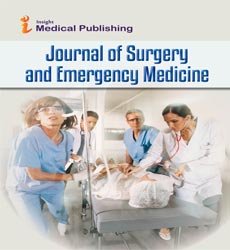Axillary Intra-aortic Balloon Pump, Biventricular Assist Device Implantation and Subsequent Orthotopic Heart Transplantation in a Patient with Sickle Cell Trait
Abstract
A 38-year-old male presented to a local hospital with breathlessness. After thorough investigation, transthoracic echocardiography demonstrated dilated cardiomyopathy. He continued to deteriorate and developed pulmonary oedema, necessitating transfer to our centre. Routine work-up for cardiac transplantation found him to be a carrier of the HbS sickle cell trait, with an HbS concentration of 34.4%. Due to uncertainty of candidacy and further deterioration, axillary-IABP supported his bridge-to-decision. An IABP was inserted under fluoroscopic guidance via the right axillary artery using Seldinger technique. He continued to deteriorate requiring implantation of a BiVAD. He developed cardiac tamponade 23 days after BiVAD implantation demanding surgical evacuation. His condition improved with recovery of renal and liver function and resolution of pulmonary oedema. As there was no evidence of myocardial recovery, he was placed on the super-urgent heart transplant (HTX) list. After 45 days of BiVAD, he underwent orthotopic HTX. The donor heart was from a 31-year-old male transported on cold storage. The patient remained normothermic throughout and diastolic-arrest was achieved with cold-blood cardioplegia delivered via the aortic root. Upon completion of anastomoses, bleeding from the posterior aortic wall occurred, requiring further aortic cross-clamping, cold-blood cardioplegia and administration of multiple blood products. Subsequently, the right ventricle distended and the septum became dyskinetic. Central veno-arterial extracorporeal membrane oxygenation was initiated uneventfully. VA-ECMO was weaned on the 5th-postoperative day and he was discharged from the CTCCU six days later, he returned home 28 days after HTX. He maintained recovery and remains alive and well 34 months after discharge.
Open Access Journals
- Aquaculture & Veterinary Science
- Chemistry & Chemical Sciences
- Clinical Sciences
- Engineering
- General Science
- Genetics & Molecular Biology
- Health Care & Nursing
- Immunology & Microbiology
- Materials Science
- Mathematics & Physics
- Medical Sciences
- Neurology & Psychiatry
- Oncology & Cancer Science
- Pharmaceutical Sciences
